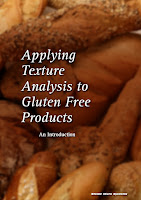The global demand for gluten-free products is expanding and continues to be a significant technological challenge for the bakery industries. One of the principle challenges is producing gluten-free baked goods and pasta with similar textural quality to the gluten-loaded counterparts.
The market demand of gluten-free (GF) baked goods and pasta is expanding. Despite the health halo associated with GF food category, commercially available GF cereal-based foods are often characterised by lower nutritional quality than their gluten-containing counterparts, having lower dietary fibre, protein and resistant starch (RS) contents, along with enhanced starch digestion rates and extents.
Plenty of research has therefore been conducted to ameliorate the nutritional profile of GF foods and one of the possible strategies is the partial replacement of common GF-flours with novel nutrient-dense raw materials. Legume flours, dairy proteins, fruits and vegetable-based powders, along with fibre sources and other GF materials have been added at different inclusion levels in GF baked goods aiming to enhance their technological and nutritional profiles. However, reformulation of baked goods can affect dough rheology and staling rates of the finished products and ultimately affecting such properties as crust and crumb hardness.
There are a number of recent research publications dealing with these issues:
- Moringa oleifera L. leaf powder as ingredient in gluten-free biscuits: nutritional and physicochemical characteristics
- Potato Flakes (Solanum tuberosum L.) as a Factor Modifying the Rheological Properties of Dough and Limiting the Staling of Gluten-free Bread
- Development and characterization of gluten‐free potato bread
- High Protein Rice Flour in the Development of Gluten-Free Bread
- How does the replacement of rice flour with flours of higher nutritional quality impact the texture and sensory profile and acceptance of gluten‐free chocolate cakes?
- Potential of chickpea and psyllium in gluten-free breadmaking: Assessing bread's quality, sensory acceptability, and glycemic and satiety indexes
- Sunflower protein concentrate: A possible and beneficial ingredient for gluten-free bread
- A new gluten‐free product: Brown rice bulgur, and its physical and chemical properties
- Use of alternative protein sources in the bakery industry
Through the production of gluten free products, stakeholders of the food industry are striving to serve the needs of celiac patients as widely as possible with a continuously increasing product range ensuring the right nutrient intake without compromise on textural quality.
To read more, request our article ‘Applying Texture Analysis to Gluten-Free Products’.There is a Texture Analysis test for virtually any physical property. Contact Stable Micro Systems today to learn more about our full range of solutions.
For more information on how to measure texture, please visit the Texture Analysis Properties section on our website.
 The TA.XTplus texture analyser is part of a family of texture analysis instruments and equipment from Stable Micro Systems. An extensive portfolio of specialist attachments is available to measure and analyse the textural properties of a huge range of food products. Our technical experts can also custom design instrument fixtures according to individual specifications.
The TA.XTplus texture analyser is part of a family of texture analysis instruments and equipment from Stable Micro Systems. An extensive portfolio of specialist attachments is available to measure and analyse the textural properties of a huge range of food products. Our technical experts can also custom design instrument fixtures according to individual specifications.No-one understands texture analysis like we do!
To discuss your specific test requirements click here...
 |  |  |



No comments:
Post a Comment